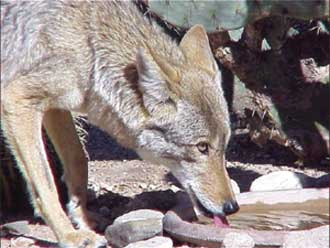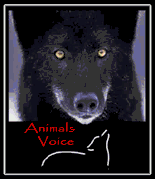Urban Coyote

photo: Bruce Mitton, The Tucson Gardener
From Maine to Florida and from California to the Atlantic seaboard Americans are increasingly coming face to face with one of nature's most determined and successful predators, the coyote. Once confined to the western territories by more powerful cousins like the grey and red wolf the coyote has spread its range to farm yards and suburban back yards throughout the United States.
Often this first encounter with humans ends in misfortune for the most innocent, the family pet. Coyotes are opportunistic hunters and will prey on any food source in its range, small dogs and cats are no exception. The fact that human companion animals and small farm livestock are attractive to the coyote is in large part why farmers very early on determined that livestock needed to be confined and protected. The same holds true in towns and cities. Animal control laws require that domesticated pets be on a leash or confined under supervision to the property of their owner, not just for our protection but theirs as well. Dogs and cats allowed to roam freely will inevitably encounter other animals both domestic and wild, the results are often tragic.
Animal control officials concede that trying to eliminate the coyote would be both expensive and ultimately futile. Left to their own devices coyotes will naturally fill the niche created when larger predators were driven out by human development. Coyotes prey on mice, rats and other small rodents which keeps their population under control and the impact on our environment is minimal compared to the dangerous use of poisons.
Coyotes are wary of human contact and attacks on humans are very rare. Alternately, uncontrolled dogs attack and kill increasing numbers of children in the United State each year as people continue to ignore animal control laws.
_______________________
The coyote is one of the most successful land predators on Earth, behind the grey wolf. Its name comes from the Aztec word 'coyote' which means "barking dog". They have an incredible range in size and coloration. Coyotes from the north are larger (avg. 75 lb (34 kg)) than those farther south, such as Mexico (avg. 25 lb (11 kg)). Their color is generally a light grey with black ticking and pale under-parts. Coyotes that live in the mountains tend to be darker and desert coyotes tend to be more yellowish in color. They may have cinnamon markings on their face and sides of their body.*
Coyotes range Canada, the contiguous 48 States and Mexico. They are found in a wide variety of habitats, from tundra to forest to scrubland to the outskirts of cities and suburban settings. They will thrive in an area just as long as there is a preybase.
For a first hand story of coyotes in an urban garden read Fab Five in The Tucson Gardener.
*Coyote data: The Canin Specialist Group













0 Comments:
Post a Comment
<< Home